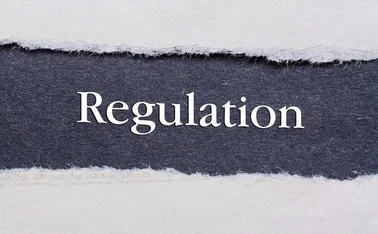
Blog: Blockchain, from industry loss warranties to original insureds

Need to know
- Blockchain technology could impact every level of the risk and capital supply chain
- Blockchain can heighten operational efficiency and increase fraud resistance
- In the reinsurance space, industry loss warranties are a natural fit
- Some start-ups are offering parametric insurance products to original insureds
Blockchain could revolutionise the insurance and reinsurance industry.
Imagine a world without claims handling - at least not in the traditional sense. An insured experiences a covered loss, perhaps roof damage from a storm. Rather than use an app or a website, he does nothing. Sensors in the roof contact the insurer directly and immediately, based on pre-programmed policy information, the insurer deposits funds into the customer's account. It's really pretty simple.
While the insurance industry hasn't achieved this level of streamlined customer support, it did take an important - if early - step in that direction a few weeks ago. The announcement of blockchain-enabled catastrophe swap by a large reinsurer shows what the future may hold for insurance at all links in the global risk and capital supply chain, all the way down to the original insured.
Several technology companies are actively working on blockchain-based solutions for reinsurance. With permanent records – which literally can't be deleted – registered in a distributed ledger, blockchain can provide heightened operational efficiency and increased fraud resistance, not to mention greater transparency. Interest has spiked across the broad financial services sector, with the insurance industry taking particular interest. For blockchain adoption to grow, however, we may need to take a fresh look at how policies work.
To truly benefit from a blockchain-based solution, the coverage involved needs to have an ‘oracle' - an independent source of data used to trigger the contract. Risk-transfer transactions based on the cedant's own claims experience simply don't provide as much opportunity for efficiency because there's no independent third party, and the data collection and reporting process would take the same amount of time regardless of blockchain use.
In the reinsurance space, industry loss warranties, whether in reinsurance or swap format, are a natural fit. Rather than trigger on a cedant's own loss experience, these non-underwritten covers use catastrophe loss data from Property Claim Services as the trigger. For example, the cedant may have protection for a single event in the US, where PCS reports an industrywide insured loss of at least $40bn (£30m). In this case, the blockchain would automatically pull data from PCS and when an event occurs that meets the ILW's criteria, prepayment operations would begin automatically, ultimately ending with the transfer of funds. This is theoretical – for now, at least.
Unfortunately, most insurance policies don't operate like ILWs. Instead, they compensate based on the underlying loss. While this approach is unlikely to disappear completely, some lines of business – mostly in property – have found new ways to provide insurance. In fact, a broad market discussion of parametric covers for individual insureds has arisen. Rather than compensate the claimant for the actual loss, parametrics would pay a fixed amount based on the magnitude of an event – a Category Three hurricane, for example. In a blockchain environment, the oracle would be the data source for the event covered, such as anemometers, sensors, or the US Geological Survey for earthquakes.
Several start-up companies have already begun to offer parametric insurance products to original insureds, and advances in connected homes and the broader Internet of Things innovation category only magnify the potential for this approach. What started with an ILW could conceivably end with a paid bent-metal claim where the insured's funds hit his bank account before his vehicle is towed away.
Only users who have a paid subscription or are part of a corporate subscription are able to print or copy content.
To access these options, along with all other subscription benefits, please contact info@postonline.co.uk or view our subscription options here: http://subscriptions.postonline.co.uk/subscribe
You are currently unable to print this content. Please contact info@postonline.co.uk to find out more.
You are currently unable to copy this content. Please contact info@postonline.co.uk to find out more.
Copyright Infopro Digital Limited. All rights reserved.
As outlined in our terms and conditions, https://www.infopro-digital.com/terms-and-conditions/subscriptions/ (point 2.4), printing is limited to a single copy.
If you would like to purchase additional rights please email info@postonline.co.uk
Copyright Infopro Digital Limited. All rights reserved.
You may share this content using our article tools. As outlined in our terms and conditions, https://www.infopro-digital.com/terms-and-conditions/subscriptions/ (clause 2.4), an Authorised User may only make one copy of the materials for their own personal use. You must also comply with the restrictions in clause 2.5.
If you would like to purchase additional rights please email info@postonline.co.uk








